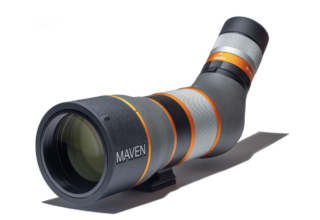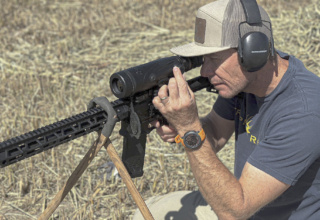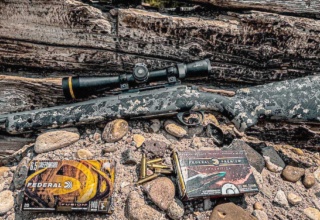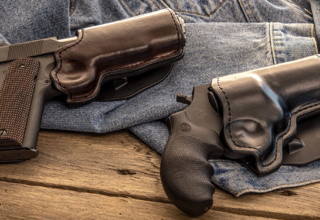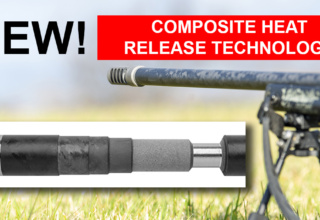A long-range riflescope created for western hunters, Maven’s RS3.2 is rugged, reliable, sports excellent ergonomics, and, most importantly, promotes long-range accuracy
by Jace Bauserman
Over the past four years, I’ve used many optics from Maven — from binos to rangefinders to spotters to scopes. Maven does it right. The manufacturer produces excellent products that serve their purpose in the field and on the range. From top-tier makes to those wearing a wallet-friendly price tag, I’ve always been impressed.
A western hunter and one that likes to send lead downrange at long distances, I was thrilled to get my hands on Maven’s RS3.2 – 5-30×50 FFP riflescope. I opted for the Black/Grey finish, which is stunning, and I was excited to see some immediate improvements not found on the original RS.3. I applaud the addition of a capped windage turret. The elevation turret is more significant in size to increase functionality. Maven also improved the scope’s zero-stop by creating line-to-line marks from the turret to the scope housing and improved the zero-stop lockdown feature. I immediately noticed this and was pleased with the gnarled metal grip on the elevation turret and windage cap. Both promote great dexterity and enable absolute settings.
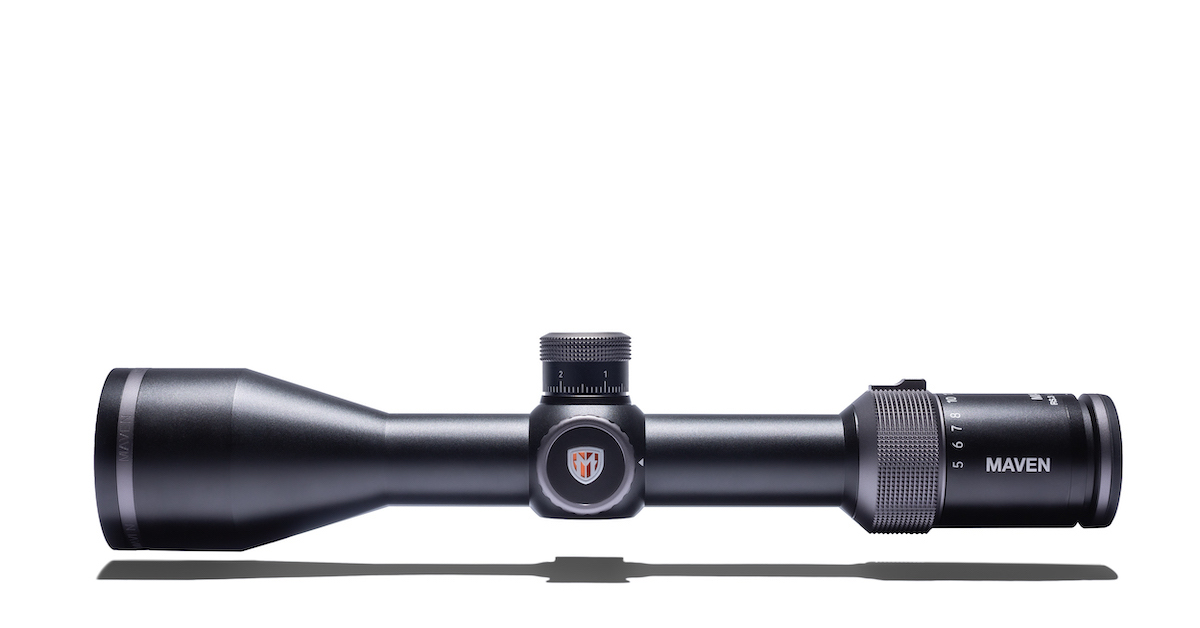
After removing the windage cap and exposing the turret, I was thrilled to see a feature back on the RS3.2 that I loved on the RS.3 — the grip-enhancing metal turret wheel. With this beauty, there is no need to pull out a penny or a screwdriver when making windage adjustments. Clicks are positive and absolute, and I love that Maven has exact settings in one-inch increments labeled. The side parallax is infinitely adjustable and ultra-smooth, and the focus wheel is butter. Like the elevation turret, windage turret, and windage cap, the focus wheel promotes a great feel via a gridded metal make, and I applaud the raised, easy-to-grip focusing wheel tab with a laser-engraved arrow to ensure the proper magnification.
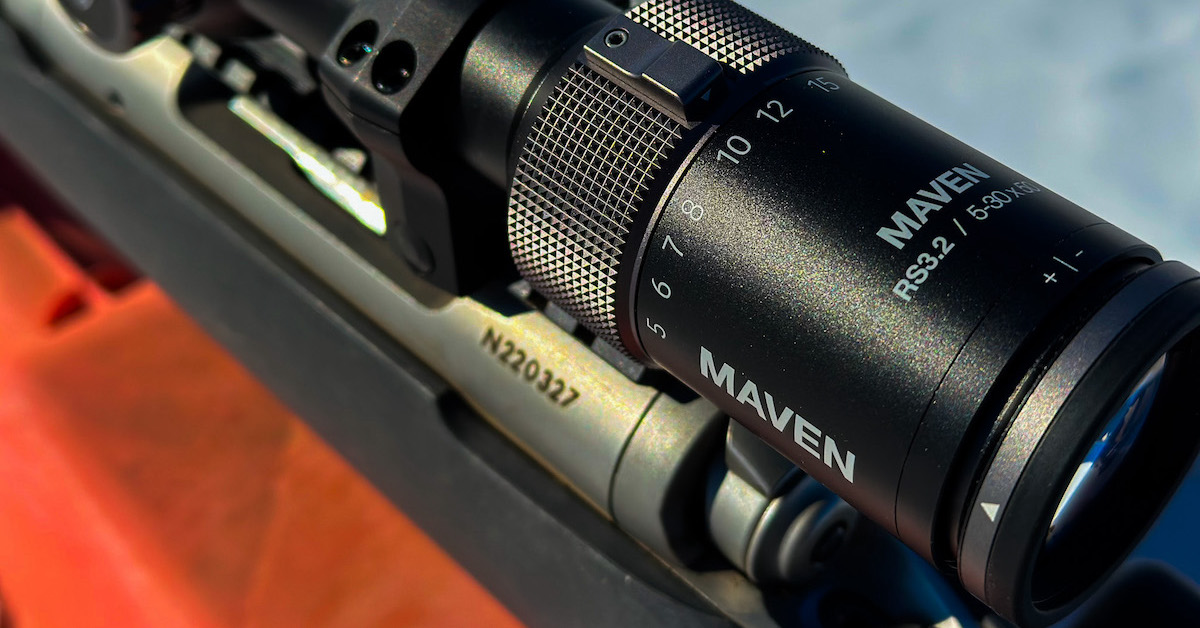
My initial impression of the glass was what I expected — perfect. Even on many of its budget models, Maven glass is solid, and the RS3.2 takes clarity to a new level. I opted for the SHR-W (MOA) reticle. I like crosshairs, windage holds, and spaced dashes below the central crosshairs for holdovers. This reticle has all of that and more, and as you increase the scope’s magnification, the lines and dashes thicken to help you home in on your target. I also love that the scope is an FFP (First Focal Plane). The reticle is set toward the front of the scope’s erector tube assembly and magnification lenses. This means the reticle size increases or decreases with the magnification setting because it is set in front of the magnification lens.
For a scope in this price range, the RS3.2 is reasonably light for a long-range western scope, and the overall length of 13.03 inches doesn’t take up half the gun’s length. Maven obviously put a lot of thought and time into creating a 27.8-ounce scope that sports as many purposeful amenities as the RS3.2.
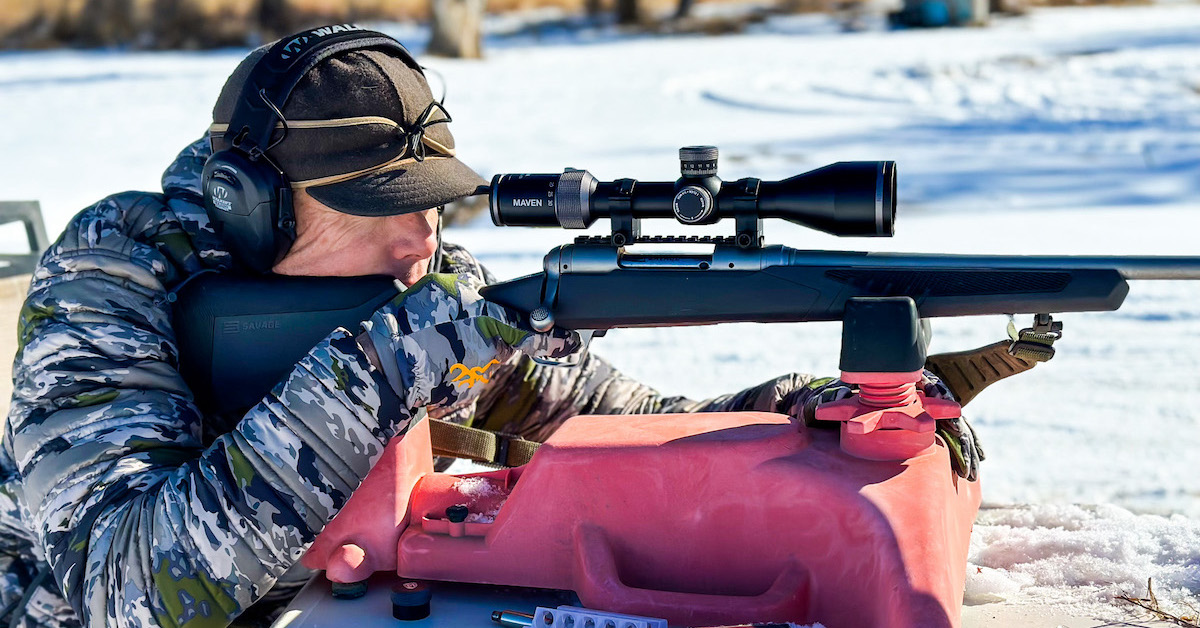
I used Warne’s MountainTech 30mm High Scope Rings for mounting, and attaching the rings to Savage’s Model 110 .270 WSM was a breeze. After a quick bore sight, I zeroed the rifle at 100 yards, and thanks to the toolless turrets with precision-milled adjustments, the sight-in process is elementary. The scope length-to-weight ratio on the rifle was immediately noticeable. After a few shots, even at 100 yards, it was clear this rifle topper was crafted for maximum precision.
Before diving headfirst into the scope’s long-range capabilities, we must address the elevation turret. It’s fantastic, but at first glance, it looks impossible to set the zero stop, which is essential after sighting in at your pre-determined distance. After sighting in at 100 yards, I placed my left hand on the lower portion of the knurled elevation turret, grasped the top part of the turret with my right hand, and made a counter-clockwise turn. This turn allows the threaded top portion of the elevation turret to spin and come off. After the cap is off, pull it straight up, and the remaining component will slide off. I then used the included Hex wrench to loosen three set screws on the side of the zero-stop. Now I was able to slide the zero-stop down the elevation mechanism until it was against the bottom of the turret. Next, I rotated clockwise until the zero-stop pin touched the base pin. Once finished, I tightened all screws and was set to go.
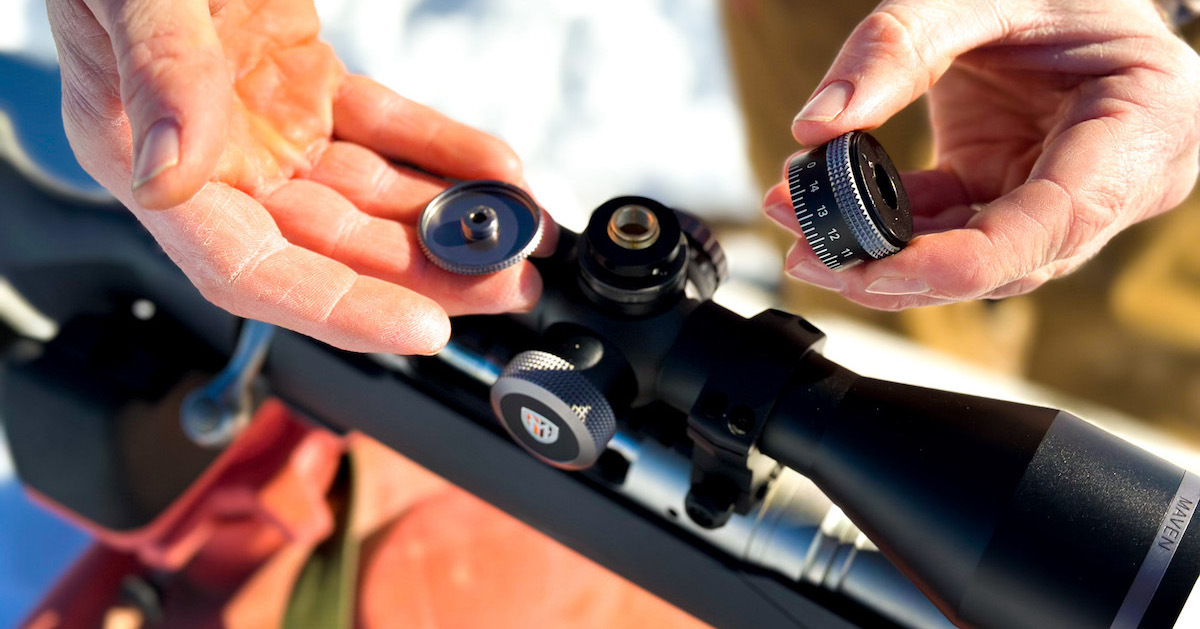
You can’t send your elevation turret to Maven to be customized; however, I had a blast creating a dope card and simply recording each position on the turret from 100 yards out to 600 yards. I also tinkered with the holdover dashes and discovered with the scope zeroed at 100 yards, the first dash under the crosshairs put me on the money at 250 yards shooting Federal’s 270 WSM 130-Grain Nosler AccuBond. The second dash down was good for 325 yards, and the bottom dash was spot-on at 450 yards. I used the same ammunition throughout testing, and though I wanted to build my dope card out to 1,000 yards, the weather conditions in my neck of the woods wouldn’t allow it.
With the rifle driving tacks out to 600 yards, I wanted to be sure and shoot it in an array of lighting conditions. The Extra-Low Dispersion ED Glass is brilliant, and this scope will suck every last ounce of useable light out of the sky to provide accurate shooting in ultra-low-light conditions. Maven also provides a sun shade (sold separately), which I recommend when shooting long ranges in bright sun. Regardless of the sun shade, this scope is remarkably clear and provides excellent color, which translates to solid target recognition no matter how bright or dim Mother Nature is. The glass also proved to be waterproof and fog proof.
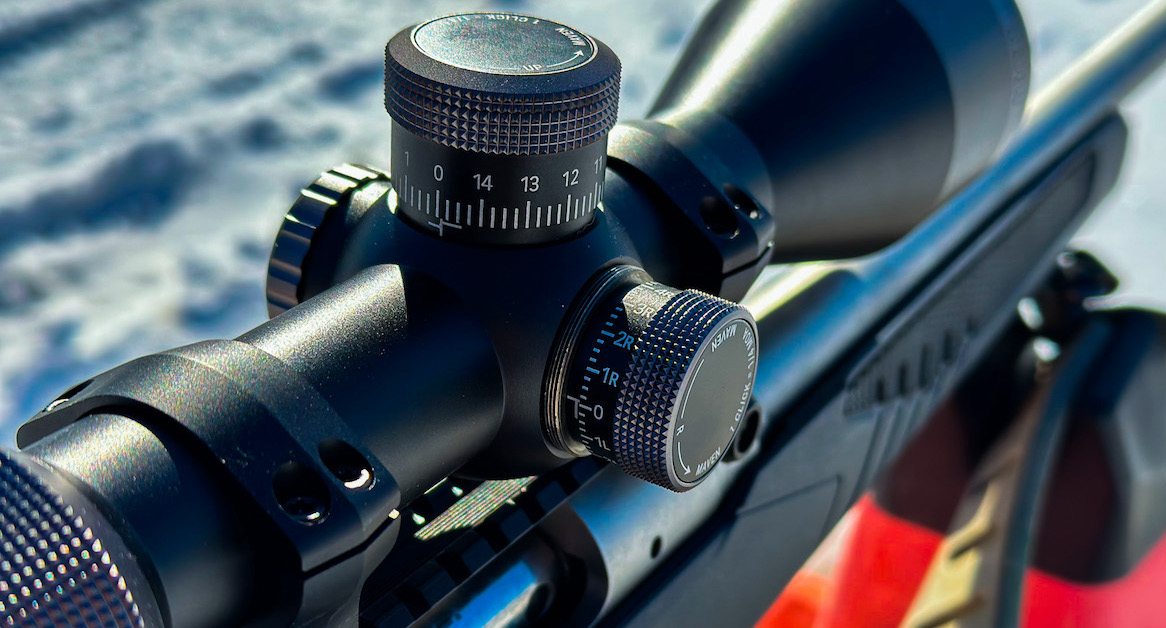
For three days, I made it a point to put some pressure on this scope. I tossed it in and out of the back seat of my truck and took a few long hikes with it strapped to my pack. Even after poor TLC, the RS3.2 put rounds in the X each time I returned to the bench.
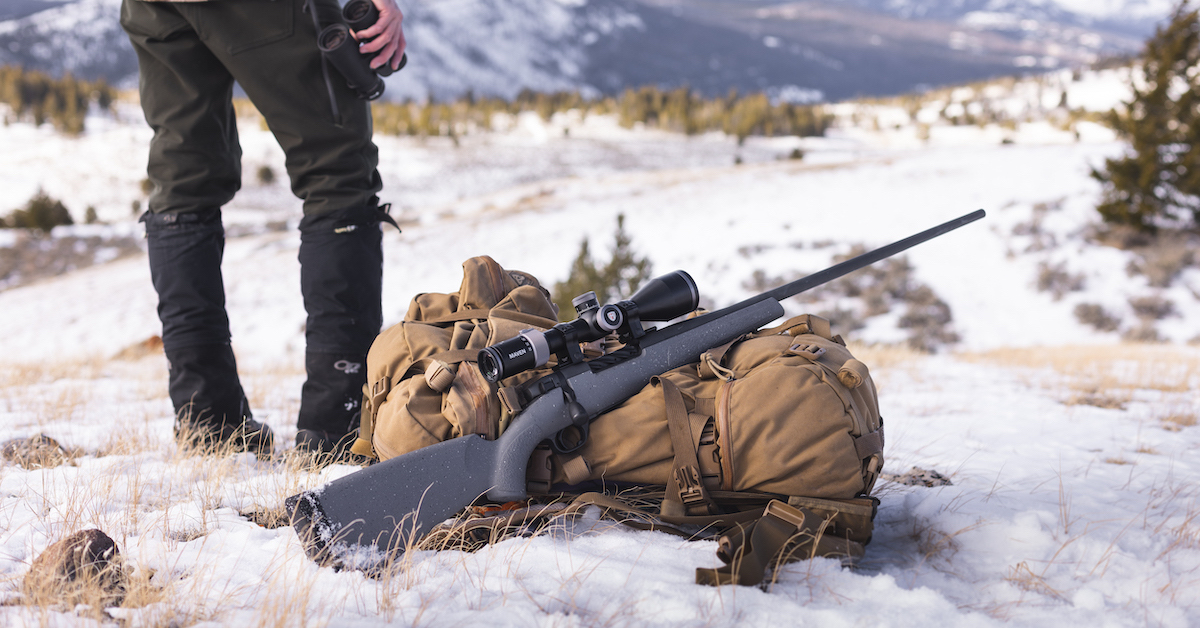
For the money and its compact build, which I love, this is one of the better long-range scopes I’ve tested. I have tinkered with scopes with a more simplistic zero-stop system, and I wasn’t thrilled with the design of how the elevation and windage turrets separated, but make no mistake, I would love to tote this scope into the Rockies on a mule deer or elk hunt. The scope builds shooting confidence quickly, and the gridded metal pieces boost functionality dramatically. It’s the long-range scope that will work for those wanting to dip their toes into the long-range game and for seasoned 1,000-plus yard steel bangers.




